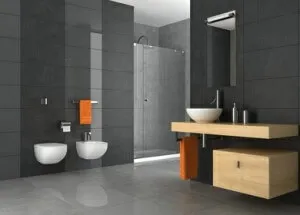We clean our bodies with soap and water, our hands with soap and water, our clothes with soap and water but our bottoms with dry paper…… does that make sense? Not everyone everywhere has the same hygiene methods – the Japanese toilet is like a toilet with a hair dryer, other cultures use bidets or hand held shower-type cleaning devices and in some countries, sponges, soft towels or wet naps are the preferred method of cleansing. But what is really best to take care of business?
Although the idea of ditching your toilet paper may seem a bit scary, millions of people all over the globe don’t use it. Some do so for environmental reasons, some feel that toilet paper does not do the job well enough, while other believe that it is downright dangerous.
Before Toilet Paper
Toilet paper has not been around forever. In Ancient Rome, a sponge placed on the end of a stick immersed in salt water was used as a bottom cleaning tool. Eskimos are reported to have used tundra moss in the summer and handfuls of snow in the winter and those in tropical locations used coconut or mollusk shells. Primitive America favored corn husks, rocks, sticks, leaves and even linen before toilet paper arrived on the scene in the late 1800’s. It is easy to see how toilet paper was a welcome departure from sticks, shells and corn cobs….. ouch.
Environmental Concerns
If reducing your carbon footprint is a priority, consider the strain that making toilet paper puts on the earth. Making one roll of toilet paper uses a ton of electricity, almost 2 KWH, and well over 35 gallons of water and almost 1.5 pounds of wood. Americans use over 30 million rolls of toilet paper in just one day. This is equivalent to 200,000 trees, 250 million gallons of water, 160 million KWH of electricity and produces almost 90 million pounds of greenhouse gases.
Hygiene and Health Concerns

Options
Installing an entirely separate bidet is a major construction project, bearing a huge price tag. However, a bidet-type feature on an existing toilet is an easy and inexpensive alternative. According to bidet manufacturers, most people transition from paper to water quite well. Although, a sheet or two of paper is nice for a little drying after the wash. Other options include installation of a handheld bidet device that showers your bottom area after bathroom use. These can be tied right into your home water supply and hooked to the edge of your toilet. A third option is a portable bidet system. These systems are great for travel.
While much of what you choose for your bathroom hygiene remains highly personal, it is nice to know that options exist. Some even say, once you go bidet…. there is no going back!
-The Alternative Daily
Sources:
http://www.mnn.com/your-home/remodeling-design/blogs/why-arent-bidets-more-popular-in-america
